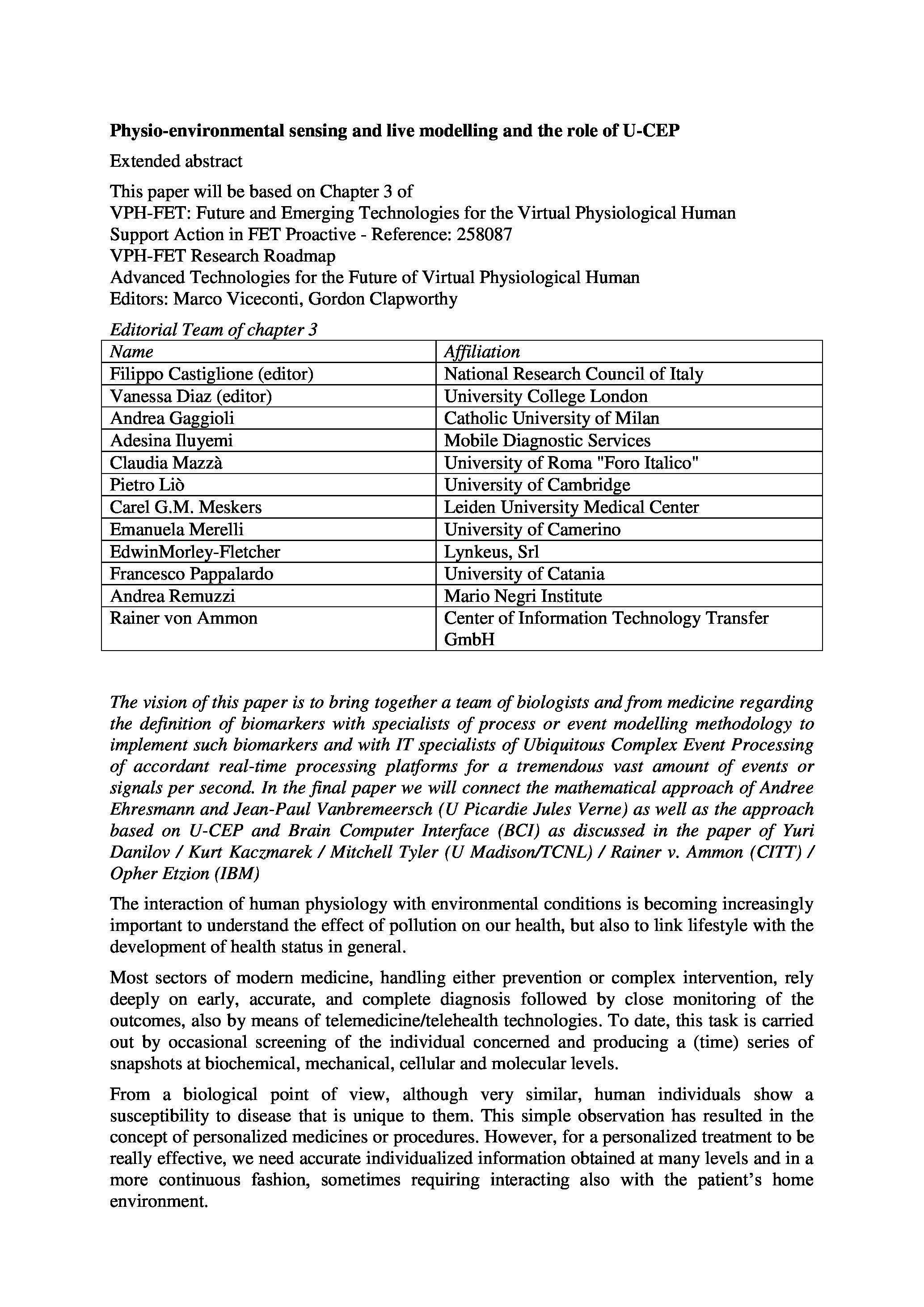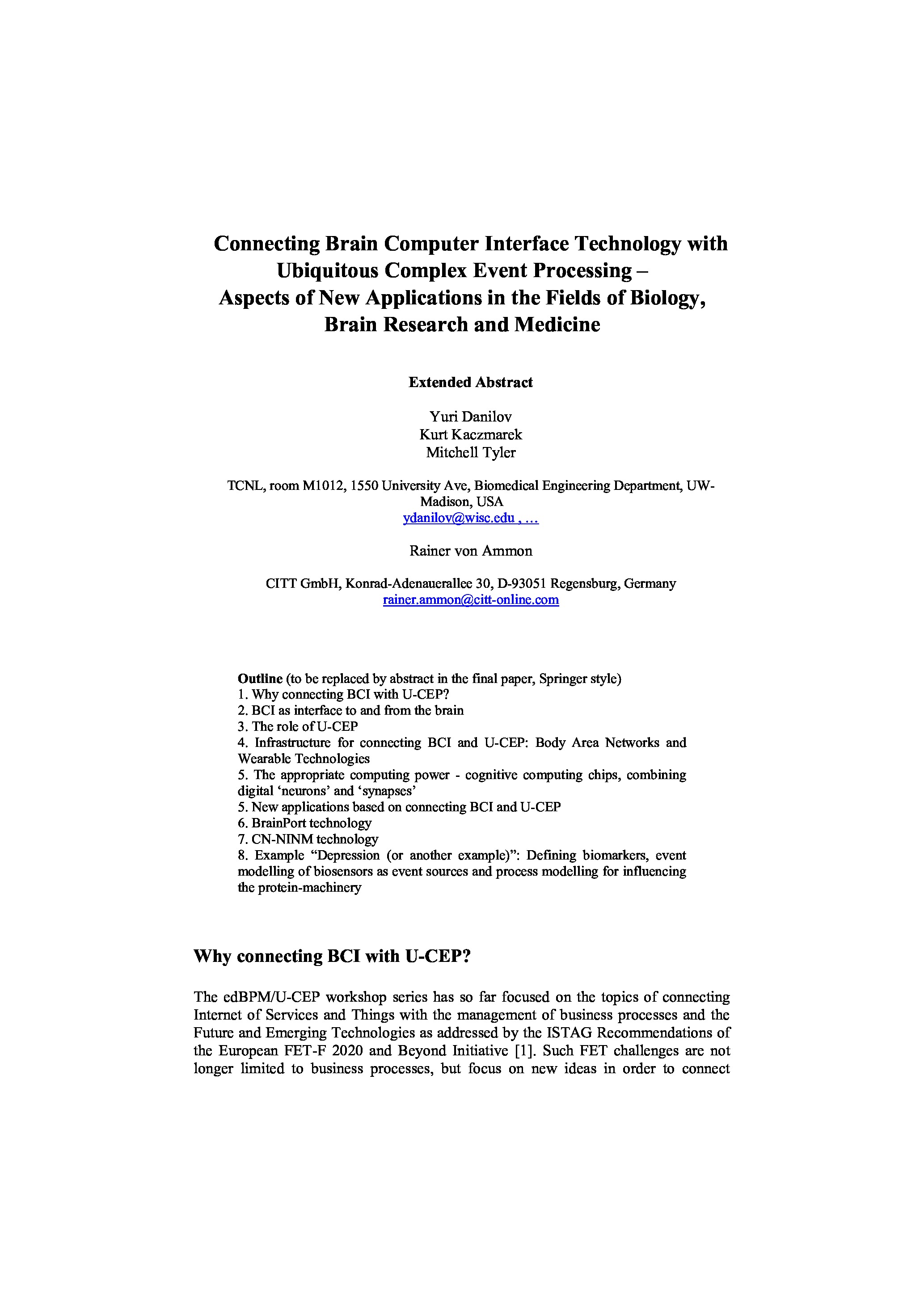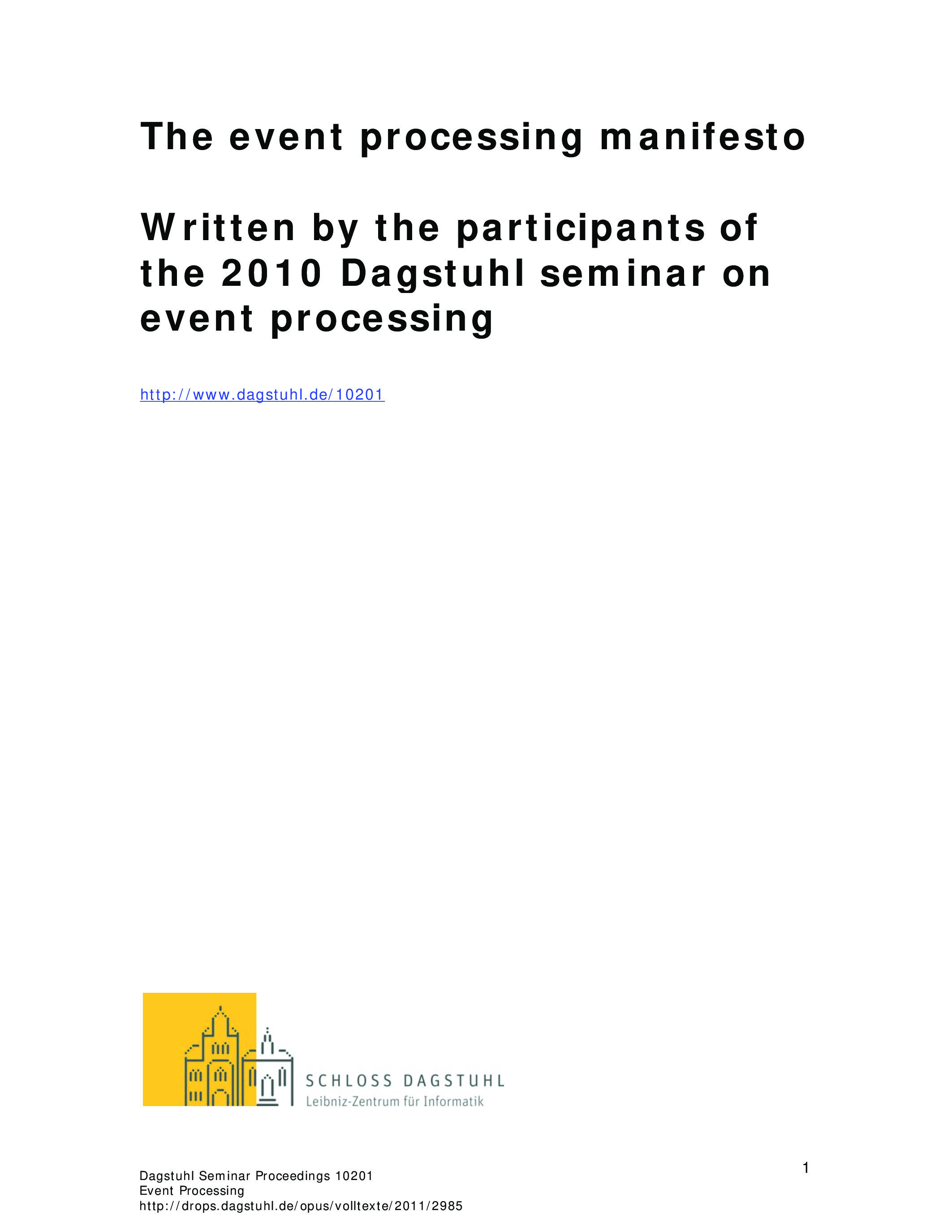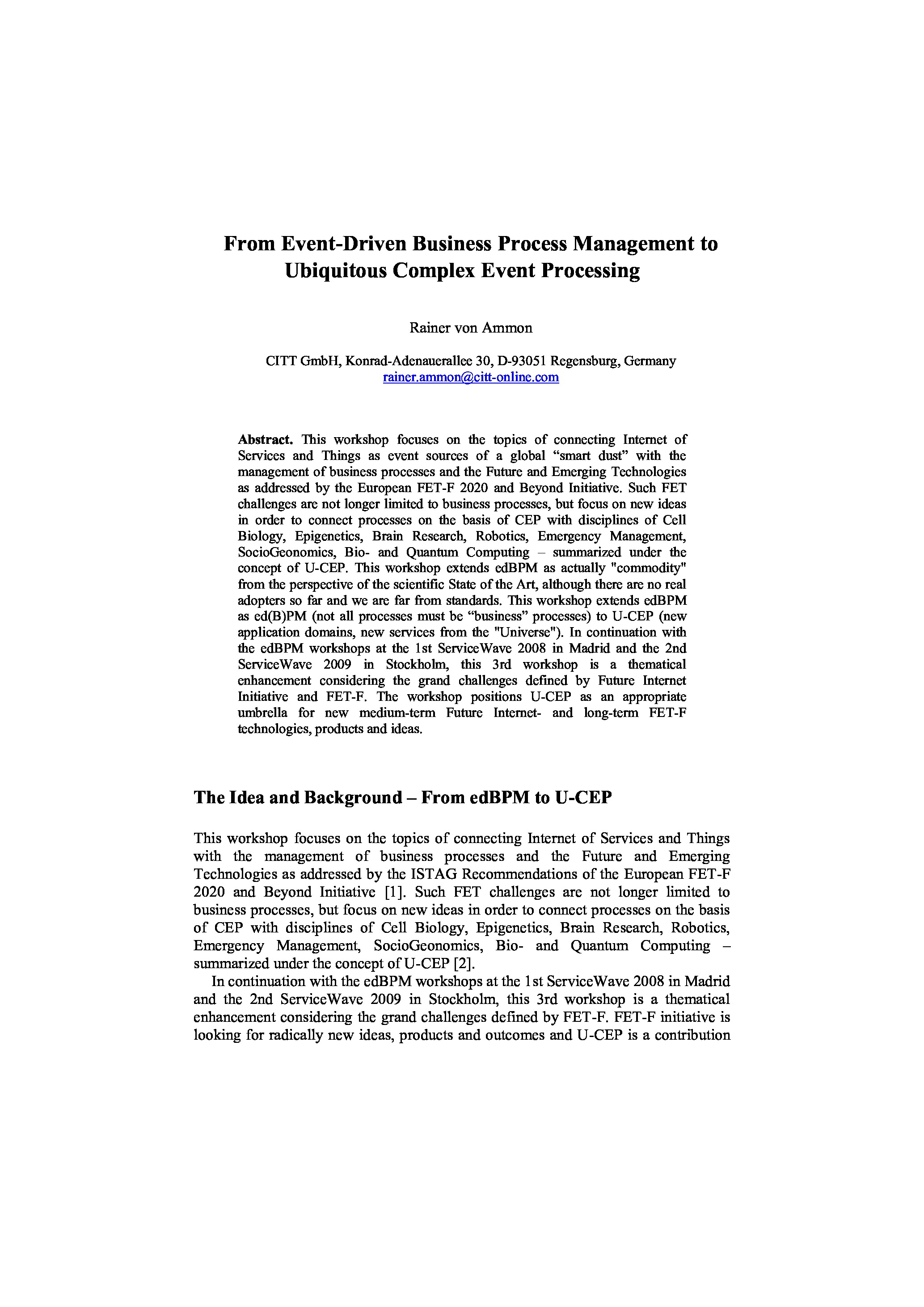Abstract:
The second Dagstuhl seminar on event processing took place in May 2010. This fiveday meeting was oriented to work toward a comprehensive document that would explain event processing and how it relates to other technologies and suggest future work in terms of standards, challenges, and shorter-term research projects. The 45 participants came from academia and industry, some of them out of the
event processing field. The teams continued the work after the conference and have summarized their findings in this document. The chapters were written by different teams and then edited for consistency.
The chapter team leaders were: Robert Berry (Chapter 1), Peter Niblett (Chapter 2), Arno Jacobsen (Chapter 3), Paul Vincent (Chapter 4), Bernhard Seeger (Chapter 5), and Patrick Eugster (Chapter 6). The Dagstuhl seminar was organized by Rainer von Ammon, Mani Chandy, and Opher Etzion (who served as editor for this document); the technical editing was done by Sharon Geva. The following people participated in the seminar: Rainer von Ammon, Darko Anicic, Stefan Appel, Jean Bacon, Robert Berry, Pedro Bizarro, Andrey Brito, Simon Brodt, Francois Bry, Alejandro Buchmann, Sharma Chakravarthy, Badrish Chandramouli, Mani Chandy, Christoph Emmsersberger, Opher Etzion, Patrick Eugster, Dieter Gawlick, Annika Hinze, Martin Hirzel, Mark Horsburgh, Arno Jackobsen, Boris Koldehofe, Alexander Kozlenkov, Wolfgang May, Daniel Meiron, Ken Moody, Peter Niblett, Adrian Paschke, Udo Pletat, Olga Poppe, Tore Risch, Harold Shcoening, Roy Schulte, Bernhard Seeger, Marco Seirio, Guy Sharon, Plamen Siemonov, Florian Springer, Nenad Stojanovic, John SutcliffeBraithwate, Richard Tibbetts, Ronen Vaisnberg, Paul Vincent, Agnes Voisard,
Christian Wolff, Carlo Zaniolo, and Holger Ziekow.
All participants contributed to this document. This role of this document is twofold: To educate the public about event processing, since it is a relatively new area. To call for action to the community in the areas of standards and further research. One of the highlights of the seminar was the establishment of an event processing grand challenge. We believe that the current applications based on event processing technology just scratched the surface of its potential; the grand challenges offers a focus to make the quantum leap in the impact of event processing on the world.




